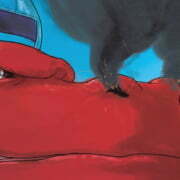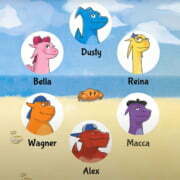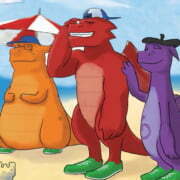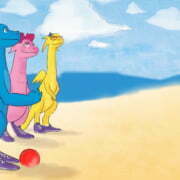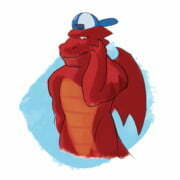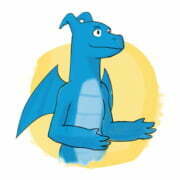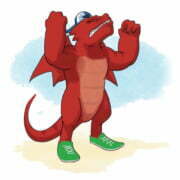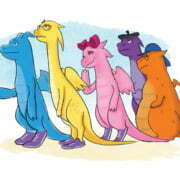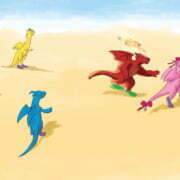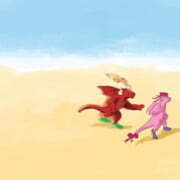Game ON is a children’s book created to encourage resilience in our young ones.
Learn how the book teaches kids to solve problems below
Solve problems: the child can apply themselves to problems, involve others where necessary, and be persistent. The child can assess the nature and scope of a problem, what he or she needs to do to resolve it, and what help is needed from others. The child can negotiate solutions with others and may find creative or humorous solutions. He or she has the persistence to stay with a problem until it is indeed solved.
Solving problems in the resilience literature is also integrated with terms such as decision making, solution-focused outcomes and, in some instances, critical thinking. Decision making, problem solving and solution-focused outcomes are cognitive process used to appraise a situation to inform an outcome, and these attributes strongly underpin the development of resilience.
Within the GRP, problem solving is recognised when a child can apply themselves to problems, involve others where necessary and be persistent. Problem solving may also be referred to as help-seeking behaviour, which involves a process of critical thinking, facilitated through cognitive appraisal and informed by a decision-making process that aims to solve the issue. Cognitive behavioural strategies can facilitate this process by changing the perception of the situation, which can mediate the trajectory of risk. The ability for individuals to use effective cognitive appraisal skills is often affiliated with an individual’s level of self-esteem and self-worth which then become protective factors for wellbeing. Conversely, when an individual is unable to gain knowledge, change attitudes and establish goal planning or problem-solve using these cognitive processes, their levels of resilience are impeded.
Game ON was designed to facilitate children’s ability to explore and implement a cognitive appraisal with the notion of challenging their perspective through a process of observation. By watching a relatable scene unfold through storytelling, children maintain the opportunity to acknowledge the thoughts, feelings and former actions they have applied to resolving conflict and challenge their process, informed by a risk analysis to improve the outcome. It this way, children can be empowered to figure out the process or issue, whilst developing effective problem-solving skills. In Game ON, Alex did not learn from his errors the first time, it wasn’t until the second scenario unfolds and his frustration is so great that he finally discovers a more desirable outcome. This initially leads to frustration and anger for Alex. However, as the book progresses, his peers encourage Alex to adopt new coping strategies, informed by taking some time out to reflect and breathe. Alex is then finally able to think about other ways to problem solve. The challenge for Alex was to become aware of his problem.
The purpose of acknowledging personal feelings and actions in any given situation is to gain awareness of feelings and the internal locus of control around those feelings. When children acknowledge how they are thinking, feeling and acting in any given circumstance, it facilitates the process of autonomously appraising the situation, with the potential to use a cognitive process to inform the outcome of the choices made. Cognitive appraisal facilitates critical analysis and effective problem solving capability, which enables individuals to maintain a sense of control over the outcome. This skill is important for most children, but more so in those who act poorly as a result of emotional outbursts or those with a propensity to catastrophise the outcome, as identified through Skinner’s motivational model of resilience.
Throughout this research project, children across all cohorts were able to autonomously demonstrate critical thinking and reflection on their current thoughts, feelings and actions, with the notion of improving their behaviour for the future. However, this was not an immediate reaction from the children. To encourage children to think about their current problem-solving strategies, the reader paused at the point in the story when Alex throws his first temper tantrum with poor temperament control.
In this section of the book Alex says, ‘I don’t care, I don’t need any of you! I’m better off being the only one in my team!’ This point in the story provided children with the opportunity to see if anyone could relate to Alex and his emotional outburst whilst educating children that Alex was simply reacting to his thoughts and feelings, without any guidance (or cognitive appraisal process) of how to manage the situation in a more appropriate manner. The point was to demonstrate to the children that high emotional states compromise effective problem-solving abilities (Taylor et al., 2014). To draw the children to this point, the researcher asked the children if they could remember a time when they felt like Alex?
I pinched my friend, I was so angry at them. (Kindergarten child, Round 1)
One time I got really angry with my brother so hit him, and then I punched him. (Year 1 child, Round 1)
My little sister stole all my loom bands, I shouted at her but I didn’t get into trouble cause Mum and Dad were not there. (Year 2 child, Round 1)
The ability for children to reflect and critically think about the consequences of their actions in regard to the process of decision making was evident in this study. Children were asked to reflect upon what happens when they hit, punch, kick, yell and pull hair.
I had to go to my room. (Kindergarten child, Round 1)
I got into a lot of trouble; I wasn’t allowed to watch my favourite TV show. (Year 1 child, Round 1)
I didn’t get into trouble cause no-one saw it, but if Mum and Dad saw it I they would be so mad and I would get grounded. (Year 2 child, Round 1)
When children can predict an outcome to a certain action, then they have applied evidence of cognitive appraisal and can use this to facilitate behavioural change, through changing the appraisal and perception of the situation. Once the children identified the behaviour, they were asked to make a cognitive appraisal of the outcome via assessing the consequences to their actions. From the answers, children were demonstrating an understanding of what consequences may be associated with certain types of behaviour.
From this point, children were read the rest of the book Game ON and, as the story progressed, they watched Alex (the red character) continue to make some poor choices. After Alex threw his second temper tantrum, Dusty, the blue character who has been designed to help children reflect upon their thoughts, feelings and actions, communicates to Alex how he has affected the team and himself. Dusty provides a solution to Alex in managing his emotions suggesting that he can calm his mind and actions by taking three deep breaths before he reacts.
Peer-mediated approaches can be a very successful strategy for teaching positive and desirable behavioural traits. Having a process of reflection that facilitates solution-focused outcomes can demonstrate leadership, which is essentially characterised by a person who can use information to make decisions, display a high level of positivity with approaches, accept challenges in a positive way and utilise personal strengths to achieve goals.
Definitely the problem solving aspect of the book relates to resilience and you see the children reflecting on what they can do. Stop and think about the issue first before I react. Dusty the main character does a good job at showing the children a way of solving a problem. He didn’t take a backwards step in creating the solution; you can see he strongly guides Alex to getting to the solution. It helps the children to work through their problems, you know, if it’s me that’s getting angry, how we are going to solve it, but if it’s someone else getting angry or yelled at or bullied, what can I do about it and then making a decisions. So from your problems, what are my different options or solutions? You know you can hear the children saying, I’m going to talk to the teacher, or I’m going to talk to the person, or I’m going to walk away and take some deep breaths. (Year 2 teacher, Round 2)
As well as taking some deep breaths, Dusty suggests to Alex that he walk away and think about how he feels before he reacts to his anger. In the motivational resilience model emotional reactivity is considered to be a maladaptive coping mechanism and inhibits strategising and help-seeking behaviour, as it shuts down the executive functions of the brain. Conversely, when children are able to control, regulate and effectively express their emotions through a cognitive process, they exhibit traits of adaptability, which is a strong resilience indicator (examples provided in the data below, p. 190). When children can implement a cognitive approach (e.g., gaining knowledge, assessing attitudes, implementing goal planning and setting, applying appropriate behaviour) to challenging tasks, then they are able to apply problem-solving skills which can overcome barriers of behaviour change that can impede resilience. Much of this information feeds into the notion of self-regulation, as previously discussed.
Once the entire book Game ON had been read to the participants, the researcher was interested to see if the problem solving, critical thinking, decision making and solution-focused outcomes designed into the book had an impact on the children and their behavioural responses, driven through a cognitive appraisal process in regard to managing conflict or emotions. The only way the researcher could ascertain this was to document the baseline responses to the original conflict resolution strategy, as previously mentioned, with the notion of looking for new ways to resolve issues. The researcher asked the children how they may be able to change their behaviour when they get angry. Whilst this is a repetition of the previous responses, the purpose is to demonstrate how Game ON can facilitate problem solving skills; therefore, using the former responses provides an opportunity to demonstrate this aspect of the book.
I think that I could walk away and think about things. (Kindergarten child, Round 1)
When you get so so so angry and you can’t take a deep breath I think you should just walk away and watch TV. (Year 1 child, Round 1)
Be calm and take a deep breath, maybe next time I could take a deep breath. (Year 2 child, Round 1)
The message of walking away and taking deep breaths appeared to be consistent across the three child cohorts for Round 1. Round 1 demonstrated that children were able to identify with some of the strategies suggested in Game ON to improve the choices they make around conflict and anger management from a theoretical standpoint. To understand if this learning could transform from theory into practice, Game ON was left with the teachers to read at their convenience over a four-week period and, in Round 2, the researcher returned and questioned the children about their management strategies with anger and resolving conflicts. Previous examples have already been provided in regard to how children demonstrated evidence of Kolb’s experiential learning, with behaviour change motivated by the dialogue in Game ON. Below are further examples from the children who applied an effective problem-solving strategy by using a risk analysis process.
I walked away and have taken a few deep breaths. (Kindergarten child, Round 1)
I walked away and take deep breaths and sometimes I listened to music. (Kindergarten child, Round 1)
I went to my bedroom and put some music on. (Kindergarten child, Round 1)
My sister took my dominoes, and she wouldn’t give it back, so I went and told my mum and my sister said sorry. Then another time when I got angry my sister almost broke something I got angry but I went and took a few deep breaths and went and drank some water. (Year 1 child, Round 1)
When I get angry I go outside or I go to my room and take 60 deep breaths and then I come back inside. (Year 2 child, Round 1)
Sometimes I will walk away and think about what I did wrong, I take a few deep breaths and then I will come back and say that I am sorry. I go outside, I go for a bit of a run out then think about things and then I come back in and I say sorry. (Year 2 child, Round 1)
It was evident through the children’s responses that they were able to change their appraisal of the situation through the assessment of their thoughts, feelings and actions. Again, this is evidence of children applying Kolb’s model of theory to practice creating active learning. This was reflected by the change in choices they made to deal with their anger and past responses. The Australian Health and Physical Education curriculum and the PDHPE K–6 and PDHPE K–10 syllabi provide opportunities for children to apply problem-solving abilities that also encourage an assessment of the decision-making process. Research highlights that when a child is able to apply problem-solving abilities they have high levels of self-efficacy coupled with high levels of social and emotional competence, which service protective factors against adversity and optimise the ability of the child to build resilience. Teaching and applying problem-solving abilities through a cognitive process appears to be beneficial across several domains of learning. When an individual’s appraisal of the situation is underpinned by a deliberate, practised/rehearsed and reflective process, they optimise the choices they have in decision making and thereby the outcomes of their actions.
The children seem to really grasp the concepts of when you are angry, it would be best to walk away or take a few deep breaths if you are really angry, and to come back when you feel better to talk about how you feel. I think for grade 1 the class really seemed to understand the main themes in the book. (Year 1 deployment officer, Round 1)
Having read Game ON a couple of times, I could see that children were able to relate incidences from the book in the playground. So when different situations have occurred they were able to talk through the scenario in class using the book and then applying different management strategies which are indicative of apply problem solving strategies. We sat in a circle and they had to talk about a time when they felt really angry and what they did, and I was able to help them relate their playground experience to the different characters. The children have learnt the main strategies from the book, that is, to walk away, to take deep breaths, and we have also been doing some meditation in the class room and we have linked this to the book, so this is why you can hear the children saying, I go into my bedroom and listen to quiet music or doing some counting as this is what we are practicing in mediation and using the book to calm yourself down when feeling angry. It was good to hear them coming up with their own ways of dealing with their emotions. (Kindergarten teacher, Round 2)
In summary, training children’s cognitive ability to solve problems as an early intervention and prevention approach may provide children with a life strategy to deal with adversity. Problem solving, solution-focused outcomes and decision making are attributes that inform resilience. To achieve this goal, it is imperative that resilience-based resources deployed within the educational forum consider the importance of entwining problem solving and decision making in the content, coupled with a practical application for the learning. Teaching children positive coping mechanisms through experiential classroom simulations may mediate the effect of risk and lead to outcomes that are more positive. It is imperative that practising and learning resilience-based attributes, such as problem solving and decision making, are conducted in a safe atmosphere and applied in conjunction with the opportunities presented in the curriculum and syllabus with active play.

